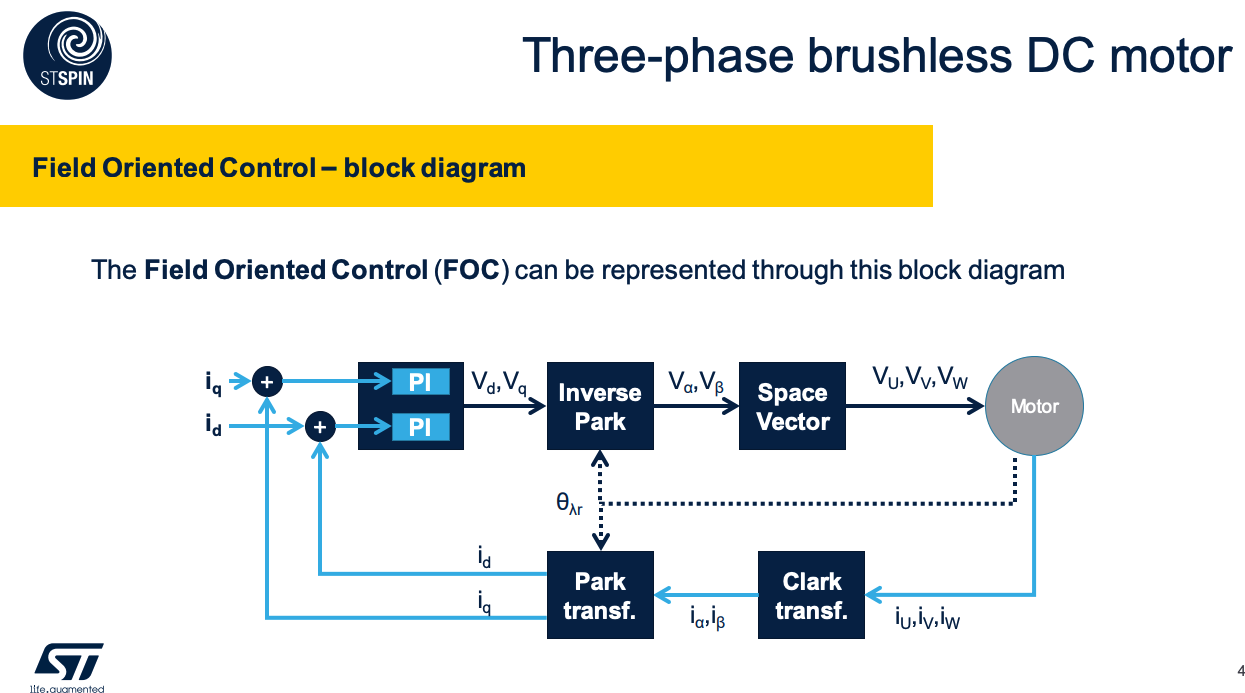Field Oriented Control (FOC)
FOC Control
Resources
- https://www.pmdcorp.com/resources/type/articles/get/field-oriented-control-foc-a-deep-dive-article
- https://www.st.com/resource/en/application_presentation/introduction_to_electric_motors_pres.pdf
Ran into this while setting up the VESC.
FOC (Field-Oriented Control) is a method for controlling brushless motors that optimizes efficiency and performance. It aligns the magnetic field with the rotor, allowing for more precise and smooth control.
The Field Oriented Control (FOC) algorithm allows to obtain the maximum performance from a BLDC motor.
The objective of the algorithm is to control the vector components of the stator magnetic field (i.e. the phase currents) in order to obtain the target intensity and phase relation with the rotor magnetic field.

Long answer and how this relates to VESC from ChatGPT
FOC (Field-Oriented Control) is an advanced technique used to control the speed and torque of three-phase brushless motors. It does this by mathematically transforming the stator current in such a way that the current vector aligns with the rotor magnetic field. The primary advantage of using FOC is that it allows for smoother and more efficient control of the motor, providing better torque at low and high speeds, reducing heat, and generally offering quieter operation compared to older control methods like Direct Torque Control (DTC) or trapezoidal control.
In the context of VESC (Vedder Electronic Speed Controller), FOC is often the preferred method of motor control because it provides a number of benefits that are crucial for various applications like electric skateboards, drones, and robotics. When calibrating motors through VESC, FOC can ensure that the motors run as efficiently as possible, taking into account various parameters like the motor’s inductance and resistance.
Using FOC with VESC involves a calibration process that typically consists of measuring the parameters of your motor (like resistance, inductance, etc.) and then using these parameters to configure the VESC for optimal performance. The calibration ensures that the FOC algorithm has the most accurate information possible to control your motor, which usually results in better and more reliable performance.